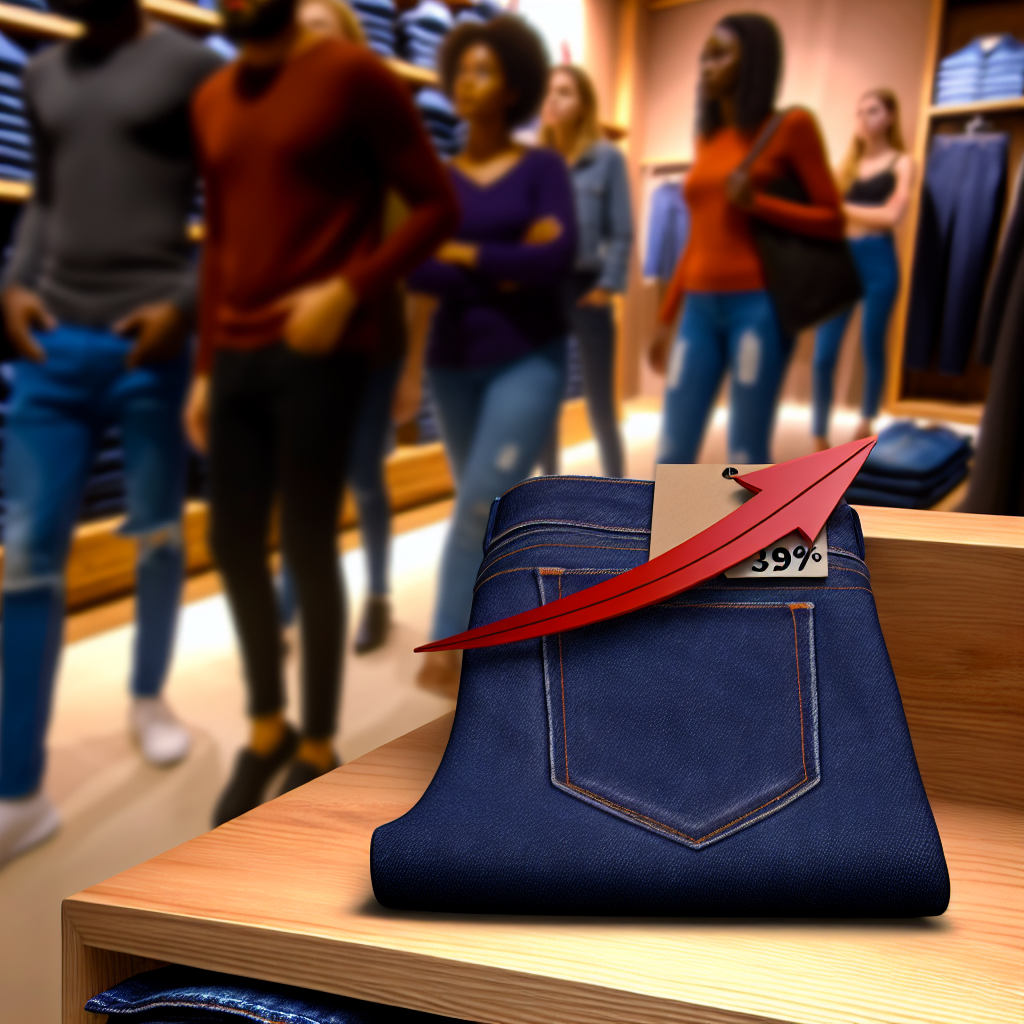Why Your Favorite Pair of Jeans Is About to Get a Lot More Expensive
The Denim Dilemma: Unraveling the Rising Costs
When it comes to staple wardrobe items, nothing is more timeless or universally beloved than a good pair of jeans. However, for denim aficionados and casual shoppers alike, a financially uncomfortable trend is emerging — denim prices are steadily on the rise. Recent economic shifts, supply chain disruptions, and raw material shortages are converging in a way that’s poised to make your favorite Levi’s, Wranglers, and designer jeans significantly more expensive.
In this article, we’ll dive into the key factors contributing to this denim price surge and explain why it’s happening now, what it means for consumers, and how the fashion industry is responding.
Global Cotton Prices Are Hitting All-Time Highs
At the heart of the denim industry lies cotton — the fundamental fabric of most jeans. The price of cotton has skyrocketed over the past year due to a combination of factors:
- Extreme Weather Patterns: Heatwaves, floods, and droughts have severely impacted cotton-producing regions such as India, Pakistan, and the United States, shrinking available supply.
- Increased Demand: As post-pandemic economies reopened globally, demand for textiles surged, further straining supply chains.
- Geopolitical Tensions: Trade policies and restrictions — particularly between the U.S. and China — have affected cotton supply chains, especially for large-scale manufacturers.
Consumers may not be aware of the ripple effect that cotton pricing has on product costs, but in reality, these sharp increases significantly affect the bottom line for brands. Consequently, companies are passing the costs on to consumers.
Labor Shortages in the Apparel Industry
Another factor contributing to the price hike is the ongoing global labor shortage. The apparel manufacturing industry has suffered immensely from post-pandemic labor disruptions:
- Factory Closures: Major denim-producing countries like Bangladesh, Vietnam, and Cambodia experienced prolonged factory shutdowns, delaying production timelines and reducing output capacity.
- Wage Adjustments: To retain workers and maintain production pace, many manufacturers have increased wages. While this is a win for garment workers, it also leads to higher production costs.
- Shipping Delays: Once production is complete, labor shortages in shipping and port operations further slow down delivery to markets, increasing inventory costs for retailers.
Combined, these labor-related issues put more financial strain on manufacturers and brands, pushing prices even higher at retail.
Inflation and Consumer Spending Power
As inflation continues to rise, everything from gas to groceries has become more expensive — and clothing is no exception. While demand for casual wear like jeans remains strong, many consumers are also tightening their wallets.
How Brands Are Reacting
To maintain profitability, fashion brands are adapting in several ways:
- Price Increases: Most obviously, many labels are raising their prices to reflect increased production and material costs. This applies to both luxury and mid-tier brands.
- Reducing Inventory Variety: Companies are cutting back on the number of jeans styles they offer to focus on best-sellers, streamline production, and reduce waste.
- Exploring Recycled or Alternative Materials: Sustainable cotton alternatives and recycled denim are being researched and introduced as cost-effective, eco-friendly options.
- Direct-to-Consumer Models: By selling directly to consumers via online platforms, brands are avoiding high wholesale costs and third-party retailer markups.
For shoppers, this means fewer discount promotions and a shrinking window for catching your dream pair of jeans at a bargain.
The Impact of Millennials and Gen Z on Denim Demand
Millennials and Gen Z shoppers are driving the denim market with new preferences in cut, fit, and sustainability. These generations tend to favor quality over quantity and are willing to pay more for eco-conscious brands and jeans made using ethical labor practices.
This shift is influencing how brands produce and price their products. Companies looking to stay relevant are investing more in sustainable practices and transparency — but those efforts come with higher up-front costs that are reflected in retail pricing.
The Rise of the Resale and Secondhand Market
Given the rising costs, many budget-conscious consumers are turning to secondhand fashion. Platforms like ThredUP, Poshmark, and Depop are thriving, offering pre-loved denim at more accessible prices. This shift not only helps consumers save money, but also supports a more circular fashion economy — reducing waste and extending the life of garments.
Will Jeans Continue to Get More Expensive?
The short answer is: most likely, yes. With ongoing inflation, climate-related supply challenges, and heightened labor costs, jeans are unlikely to return to pre-pandemic pricing levels anytime soon. However, some experts anticipate that innovation in sustainable materials and automation in manufacturing could eventually stabilize prices.
Retailers may also continue experimenting with subscription models, loyalty programs, or “buy now, pay later” solutions like Klarna and Afterpay to ease the cost burden on consumers.
What You Can Do as a Consumer
Here are some smart tips for shopping wisely in this new denim economy:
- Buy Less, Choose Better: Invest in high-quality jeans that will last for years and withstand multiple washes and wears.
- Take Advantage of Sales: Keep an eye out for off-season sales, online deals, and loyalty rewards.
- Shop Secondhand: Explore curated thrift stores, consignment apps, and vintage shops for well-preserved denim at reduced prices.
- Care for Your Jeans: Extend the life of your jeans by washing them less frequently, avoiding dryers, and patching small tears or loose seams.
Conclusion
Jeans have long been a symbol of durability, functionality, and personal style. But in today’s rapidly evolving economic landscape, owning a quality pair may come at a steeper price than before. From raw cotton shortages and labor cost increases to shifting market trends driven by a younger, eco-conscious generation, multiple forces are contributing to the surge in denim prices.
While the cost of your favorite jeans may rise, this transformation also signals an opportunity to embrace more sustainable, mindful consumer habits. Whether you choose to splurge on a high-end pair or hunt for vintage denim treasures, making informed, intentional buying decisions will ensure your wardrobe remains as timeless as your favorite pair of blues.











